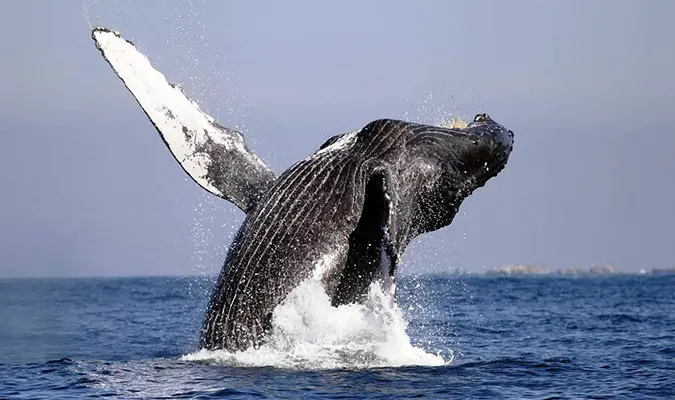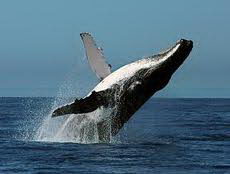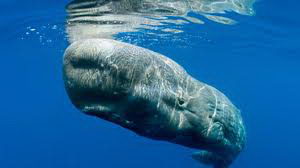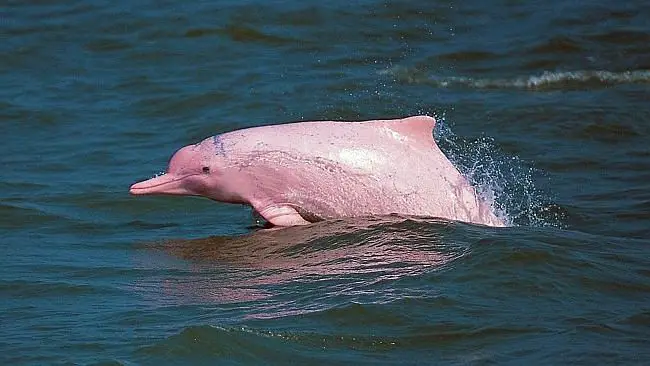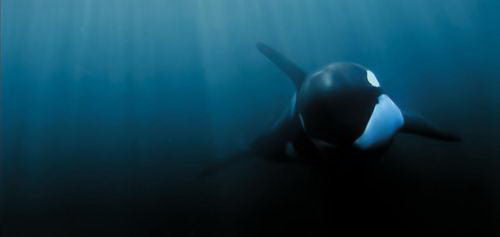Some of the most educative humpback whale facts for kids are embedded in this article including humpback whale habitat, diet, and reproduction. The humpback whale (Megaptera novaeangliae) is one of the largest whales that measure 12–16 metres (39–52 ft) by length. These whales normally travel up to 25,000 km (16,000 miles) during migration. The vocalisation of males lasts for 10 – 20 minutes. Found mostly in the tropical and subtropical waters, humpback whale usually breeds in winter. The population of these animals has been alarmingly decreasing due to the excessive hunting. The total population of these species is about 80,000individuals worldwide. They are the inhabitants of Australia, New Zealand, United States, and Canada. Some species like to live in groups whereas some are solitary by nature. Nevertheless, these animals are not the social species. Biologists maintain that humpback whales tend to hunt in groups in the summer season. They are not considered to be the monogamous animals.
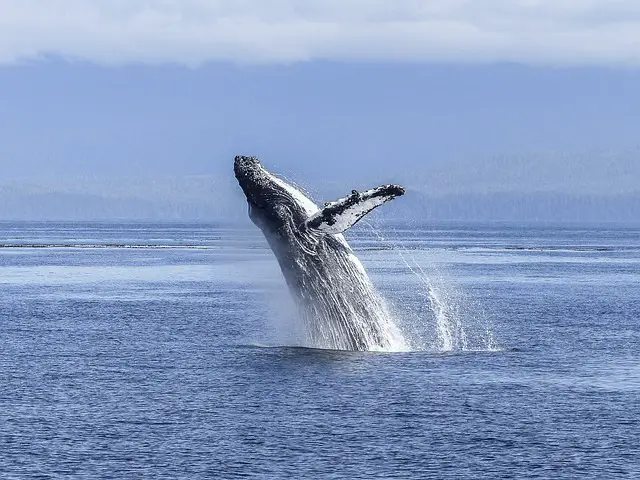 Humpback Whale Facts For Kids
Humpback Whale Facts For Kids
- Most of these mammals are concentrated in Atlantic, North Pacific, and Southern Ocean.
- There are around 270 – 400 baleen plates on both sides of the mouth. These plates are darkly colored. From the front, these plates are 46 cm (18 inches) long; whereas from rear the length measures around 0.91 metres (3 feet).
- One can see the dorsal fin when the whale comes to the surface.
- It is believed that these mammals tend to breathe voluntarily and shut off half of the brain whilst sleeping.
- The length of the newly-born calf equals to that of an adult’s head. The average length of the female is about 50 feet (15 metres).
Humpback Whale Diet – What do Humpback Whale Eat
Do you know what do humpback whales eat? Being opportunistic nature, these whales predominantly feed on krill, fish, Atlantic Salmon, capelin, Atlantic herring, Atlantic mackerel, American Sand Lance, haddock, and Pollock. Humpback whale facts about its diet demonstrate that these whales are also found to eat copepods. These whales consume 2 tons of krill each day.
Humpback Whale Facts For Kids | Reproduction
- Females turn out to be mature at the age of 5. However, males reach maturity after 7 years of their birth. The average lifespan of these animals is about 45 – 100 years.
- The length of an adult male measures around 15–16 metres (49–52 ft). The males are slightly shorter as compared to the females. The length of the females measure around 16–17 metres (52–56 ft), with the weight measuring at 40,000 kg (44 short tons). The largest specie ever recorded was at 19 m (62 feet).
- The period of gestation lasts for 11.5 months and females are known to breed in 2 – 3 years.
- The breeding months ranges from January, February, July, and August.
- The mothers nurse their calves for about months.
Where Do Humpback Whales Live?
These whales mainly inhabits in the Mediterranean Sea and Baltic Waters. They are known to be migratory species in that they travel in summer season. Some of these whales also live in the Arabian Sea. Most of the individuals are also known to reside in Hawaiian Islands and the Pacific coast of Costa Rica. Humpback whales also dwell in Antarctic from where they usually migrate by traveling 8,300 km (5,200 miles).
18,000 – 20,000 species exist in the North Pacific, 12,000 individuals are found in the North Atlantic and more than 50,000 whales are in the Southern Hemisphere. In few countries like United States, these animals are considered to be endangered species.

